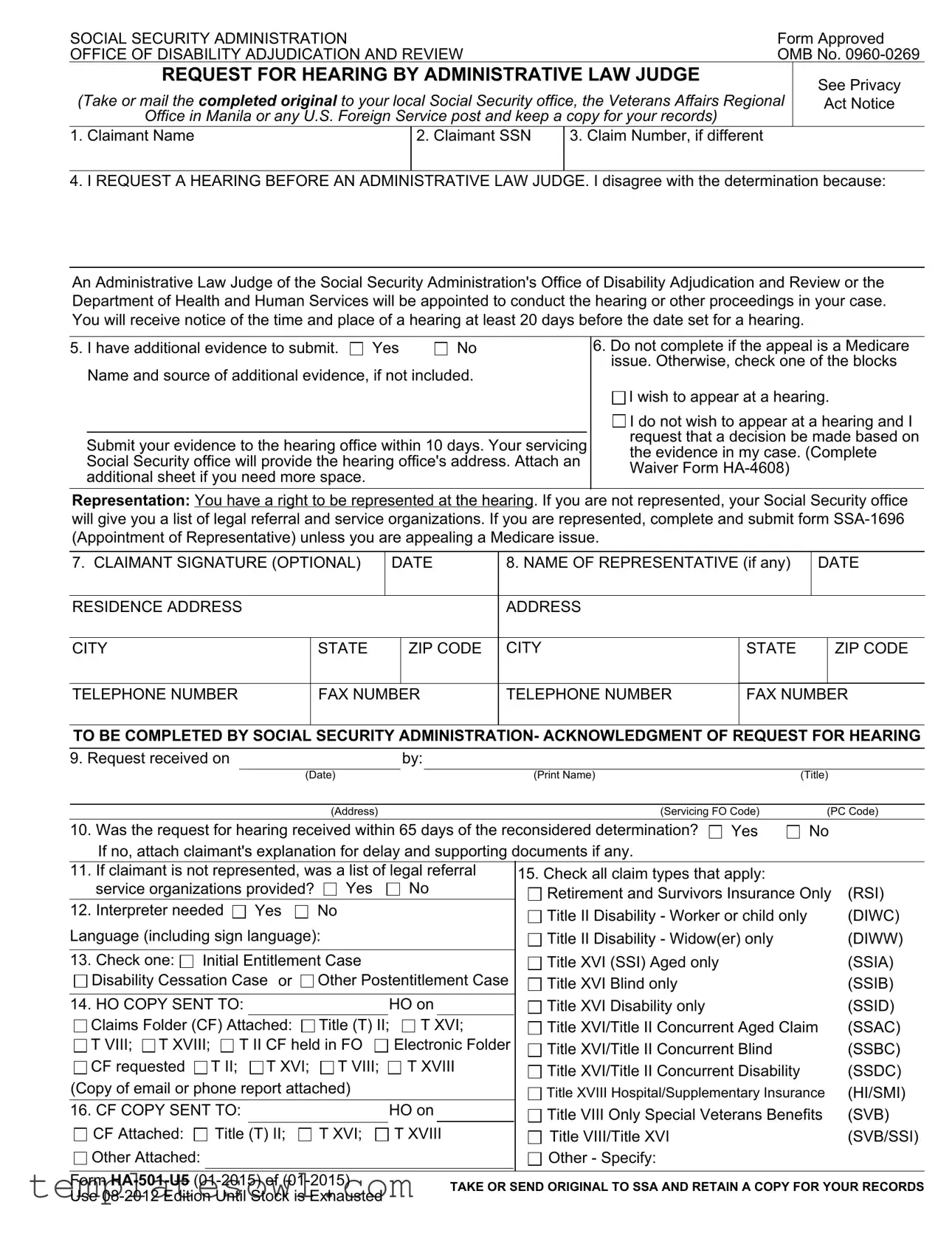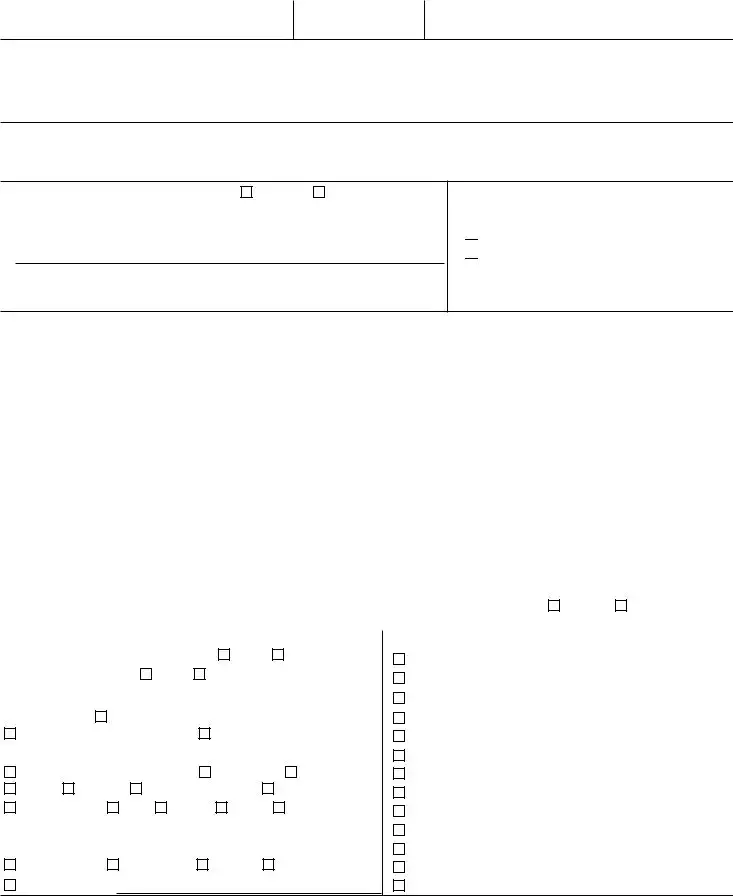PRIVACY ACT STATEMENT
Request for Hearing by Administrative Law Judge
Sections 205(a) (42 U.S.C. 405 (a)), 702 (42 U.S.C. 902), 1631(e) (1) (A), and; (B) (42 U.S.C. 1383(e)
(1)(A) and (B)), 1839(i) (42 U.S.C. 1395r), 1869(b) (1), and (c) (42 U.S.C. 1395ff) of the Social Security Act, as amended, authorize us to collect this information. We will use the information you provide to continue processing your claim.
Providing this information is voluntary. However, failing to provide us with all or part of the requested information may prevent us from making an accurate and timely decision on your claim.
We rarely use the information you supply for any purpose other than for determining problems in Social Security programs. However, we may use it for the administration and integrity of Social Security programs. We may also disclose information to another person or to another agency in accordance with approved routine uses, which include, but are not limited to the following:
1.To enable a third party or an agency to assist Social Security in establishing rights to Social Security benefits and/or coverage;
2.To comply with Federal laws requiring the release of information from Social Security records (e.g., to the Government Accountability Office and the Department of Veterans' Affairs);
3.To make determinations for eligibility in similar health and income maintenance programs at the Federal, State, and local level; and
4.To facilitate statistical research, audit, or investigate activities necessary to assure the integrity of Social Security programs.
We may also use the information you provide in computer matching programs. Matching programs compare our records with records kept by other Federal, State, or local government agencies. Information from these matching programs can be used to establish or verify a person's eligibility for Federally-funded or administered benefit programs and for repayment of payments or delinquent debts under these programs.
A complete list of routine uses for this information is available in System of Records Notices 60-0089, Claims Folder System and 60-0050, Completed Determination-Continuing Disablility Determinations. These notices, additional information regarding this form, and information regarding our programs and systems, are available on-line at www.socialsecurity.gov or any local Social Security office.
Paperwork Reduction Act Statement - This information collection meets the requirements of
44 U.S.C. § 3507, as amended by Section 2 of the Paperwork Reduction Act of 1995. You do not need to answer these questions unless we display a valid Office of Management and Budget control number. We estimate that it will take about 10 minutes to read the instructions, gather the facts, and answer the questions. SEND OR BRING THE COMPLETED FORM TO YOUR LOCAL SOCIAL
SECURITY OFFICE. You can find your local Social Security office through SSA's website at www.socialsecurity.gov. Offices are also listed under U. S. Government agencies in your telephone directory or you may call Social Security at 1-800-772-1213 (TTY 1-800-325-0778).
You may send comments on our time estimate above to:SSA, 6401 Security Blvd, Baltimore, MD 21235-6401. Send only comments relating to our time estimate to this address, not the completed form.



 I wish to appear at a hearing.
I wish to appear at a hearing. I do not wish to appear at a hearing and I request that a decision be made based on the evidence in my case. (Complete Waiver Form
I do not wish to appear at a hearing and I request that a decision be made based on the evidence in my case. (Complete Waiver Form 